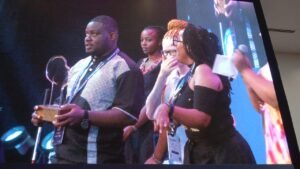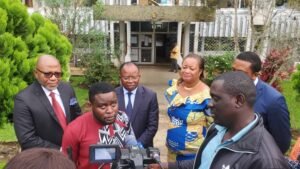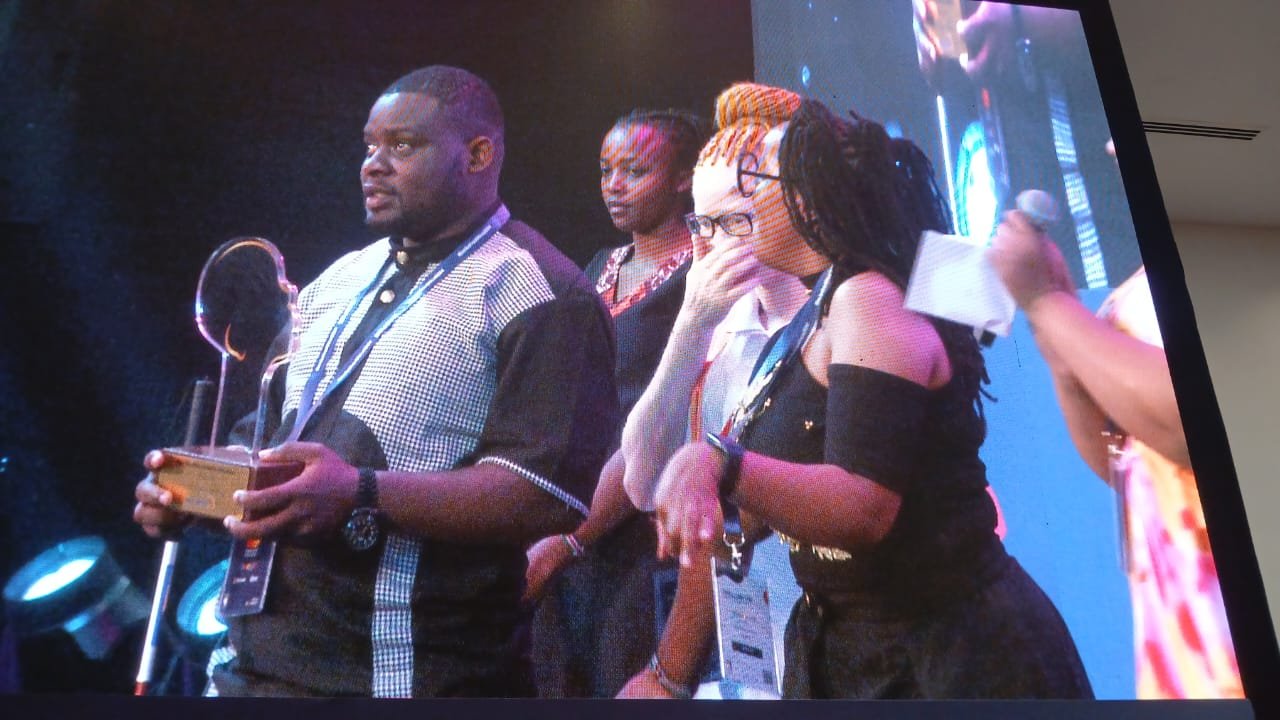Princely Kesah, Cameroon.
never has social media’s contribution to disability inclusion in Africa appeared so blazing to me as now. I guess, we become so busy sometimes that important details escape our notice. It was until recently that inABLE, a not for profit organisation in Kenya invited me to speak on Social Media’s role in disability inclusion that my eyes fully opened.The talk was delivered at the 5th Inclusive African Conference on digital technologies, which held in Nairobi from May 14- 16 2024. Held under the theme; “Breaking Barriers, Promoting Digital Accessibility for Disability Inclusion,” the conference enabled stakeholders to deliberate on how to better integrate Africans with disabilities into the fast-changing digital world of opportunities.

: Best Disability Inclusion Influencer, Fifth Inclusive African Conference
As I got busy ahead of the presentation, memories of how many times access to conventional media services were denied me on grounds that I’m blind quickly began to resurface, like a freshly cut old wound. I remembered the bitter experience I had the very first time I thought a golden opportunity had located me to speak on my University training radio station, Chariot Radio. Then, I was a first year journalism student in the university of Buea, Cameroon’s Southwest region. Having a huge passion for sports Journalism, it seemed my time to rise and shine had arrived. How I would convince the senior students who took charge of the training station that visual impairment is never a barrier to my performance on air, however, was an equation which took me several weeks to solve.
Despite how aggrieved I felt during that period, what now gives me joy is the outcome of the experience. After weeks of reflection, I spoke with a few practising journalists with visual impairment in January 2017 to find out what their experiences both within the newsroom and on the field were. The outcome was not any different from mine. And This experience marked a turning point to the foundation of my course for media inclusion in Africa, reflected through the Disability News Africa project.
I also vividly recalled how my first lecture in the department of Journalism and Mass Communication did not go down well, for the sole reason that I’m blind. The lecturer told me I was a burden to the sighted students, stressing I could never go through what he labelled a rigorous academic program in the department and that even if I graduated on the basis of pity, no one would recruit a blind journalist.
Not too long after I felt as though those bitter memories of that first day in the university were gradually being deleted, the whole scene replayed when months later I was denied employment by a famous faith based radio station manager in Bamenda, Northwest region on grounds that the building hosting the said structure had stairs and was not accessible. I got my heart on my hands when a second application from me to volunteer in the same institution was accepted two weeks after the former was rejected on reasonable accommodation basis. I could almost believe the so called scholarly prophecy of “No one will recruit a blind journalist,” but God forbid! I refused to go down that path, although it was almost becoming my reality.
Amidst the fever from what I have qualified as Media Disability Illiteracy, I sought refuge in the immense potentiality of Social Media, taking to Face Book where I freely practised the journalism I had so much passion for. The first fruit was the birth of TWIF NEWS. TWIF NEWS is a Face Book page my two friends and I told stories on, covering a wide range of topics including disability, sports and human interests. This was in January 2018. This project inspired the Disability News Africa initiative, which is today a reference point for disability inclusion standards in Africa.
As I took the stage at the Inclusive African Conference 2024 in Nairobi to explore Social Media’s role in disability inclusion, the above experiences had inundated my mine, certainly guiding me to have a rich and memorable discourse. Among other factors, awareness raising, community participation, information acquisition, sharing success stories and challenging exclusionary structures, I zoomed through the plethora of opportunities we get thanks to the emergence of the new media. Despite their indisputable benefits, it would have been injustice had I not dissected online bullying and hate speech, which continue to be on the rise, precluding freedom of expression and reducing the self confidence of users with disabilities.

While the struggle for greater media representation remains essential and a crucial part of the mission of the Disability News Africa project, I believe that my effort is not enough. Collective action is certainly a cine qua non for averting the status quo and giving a voice to journalists and influencers with disabilities in Africa.
